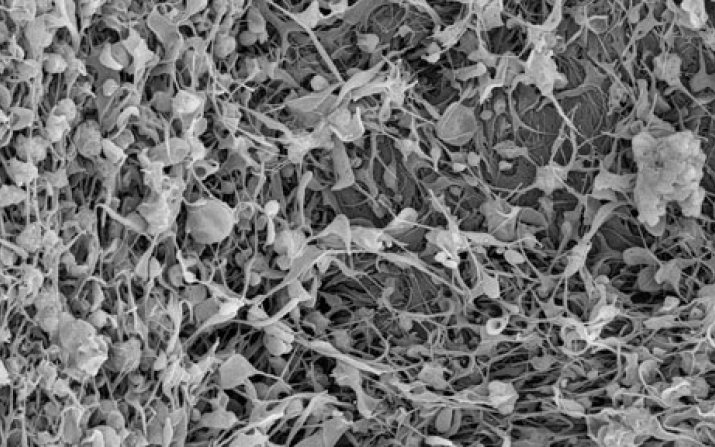Research team led by Case Western Reserve awarded $2.75M from Department of Defense to advance clot-stabilizing nanotechnology

The U.S. Department of Defense (DoD) has awarded a team of researchers led by Case Western Reserve University a four-year, $2.75 million grant to explore new technology to generate and stabilize a protein called fibrin that is essential to maintain protective blood clots in an injured body.
“The technology is envisioned to become a potential bleeding-control treatment for severe traumatic injuries in civilian emergencies and military battlefields,” said Anirban Sen Gupta, the Wallace R. Persons Endowed Professor of Engineering and professor of biomedical engineering at Case Western Reserve’s Case School of Engineering.
Sen Gupta is leading the project in collaboration with Ashley Brown, associate professor in the joint department of biomedical engineering at North Carolina State University (NCSU) and University of North Carolina (UNC), and Matthew Neal, professor of surgery and co-director of Pittsburgh Trauma and Transfusion Medicine Research Center at the University of Pittsburgh (Pitt).
A natural blood clot involves two major components: a cellular component called platelets and a molecular protein component called fibrin, formed from the blood protein fibrinogen. As Sen Gupta explains it more simply, if a blood clot is equated with stopping a flood, platelets are the sandbags and fibrin is the netting securing the sandbags.
But on the battlefield, for instance, a solider suffering a traumatic injury can bleed severely and rapidly, which can deplete the components required to make fibrin to clot properly.
Traumatic bleeding also leads to various dysfunctions and deficiencies in the body’s natural ability to keep the clot stable long enough to stop the bleeding and then allow the clot to break down naturally during healing.
Working to address that, the Sen Gupta lab at Case Western Reserve has developed a technology that can mimic the platelet’s ability to facilitate the generation of fibrin.
Simultaneously, the Brown lab at UNC/NCSU has developed a technology that mimics the biomechanical property of platelets to bind to fibrin and stabilize the clot by changing shape.
The new DoD grant will allow the researchers to integrate these capabilities into a single injectable nanotechnology for the combined effect of fibrin formation and stabilization. Studies at CWRU and UNC/NCSU will help evaluate and optimize the integrated technology. It will then be tested in a traumatic injury model at Pitt to establish its ability to stop hemorrhage and improve survival.
“We believe integrating these two systems into a single intravenous formulation will mimic the clot formation and stabilization aspects of platelets to treat traumatic injuries,” Sen Gupta said.
For a person severely injured in a civilian or battlefield setting without rapid access to a hospital, death from uncontrolled bleeding can happen within a few hours. In such scenarios, blood product transfusion is the gold standard, but blood products may not be timely and sufficiently available. This is where bleeding mitigation technologies are critically needed.
“Saving lives is the bottom line,” Sen Gupta said. “Providing the treatment as early as possible can save lives.”
For more information, contact Bill Lubinger at william.lubinger@case.edu.

